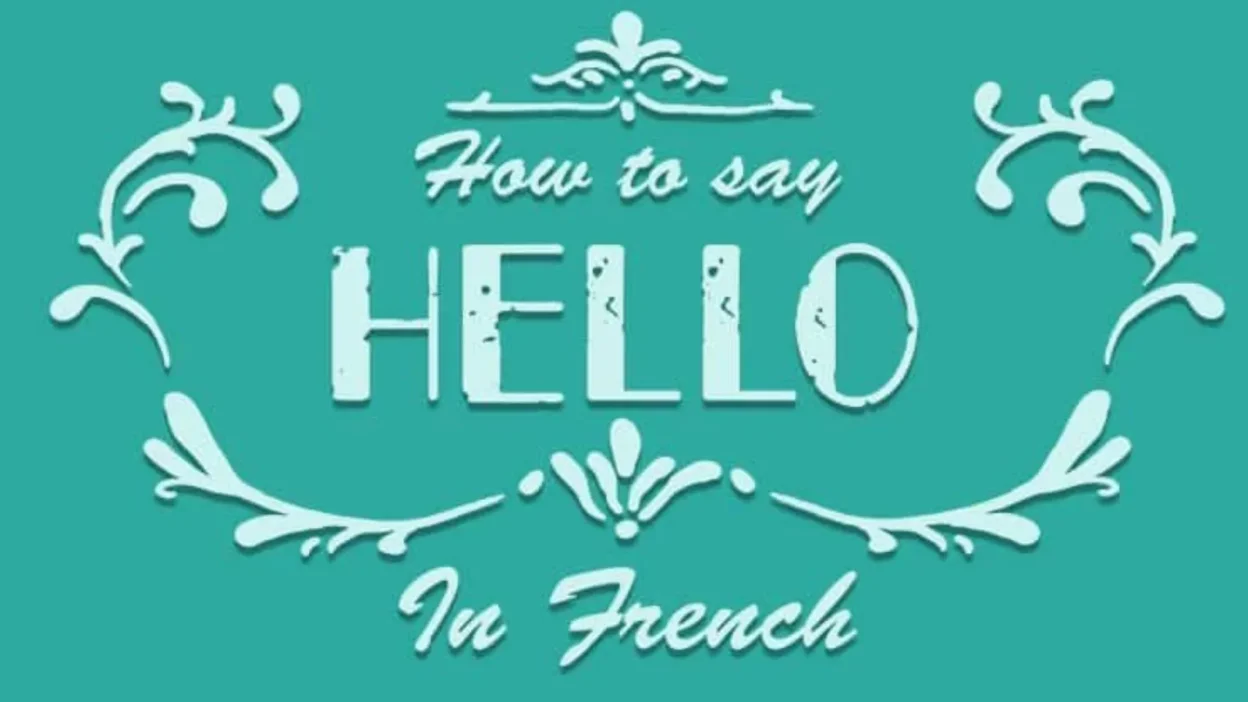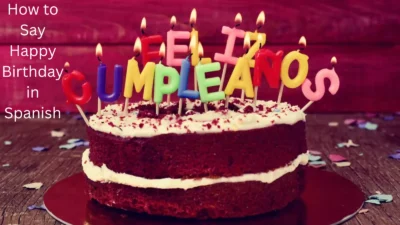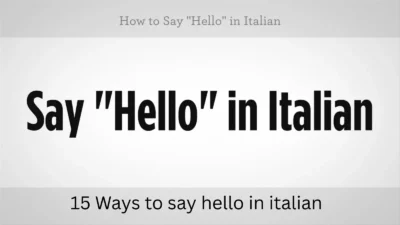Learning how to say hello in French is one of the best ways to start speaking the language and connect with French speakers. The most common word for hello is “Bonjour,” which means “good day.” It’s polite, friendly, and can be used in most situations—from meeting someone new to greeting coworkers or shopkeepers.
Mastering this simple greeting will help you sound respectful and confident when speaking French. You can also say “Salut” when greeting friends or people your age. Knowing when to use each greeting makes your conversations sound more natural and culturally correct.
Hello in French:
Let’s explore 15 authentic French greetings, complete with dialogue examples and cultural or historical context to help you understand when and how to use each one.
1. Bonjour – Good day / Hello
Origin:
Literally means “good day.” Used since the 14th century, it’s the standard formal greeting during the day in French-speaking countries.
Example:
👤 User A: Bonjour, Madame Martin. Comment allez-vous ?
👤 User B: Bonjour ! Je vais très bien, merci.
Use: Formal and polite; used from morning until early evening.
2. Salut – Hi / Hey
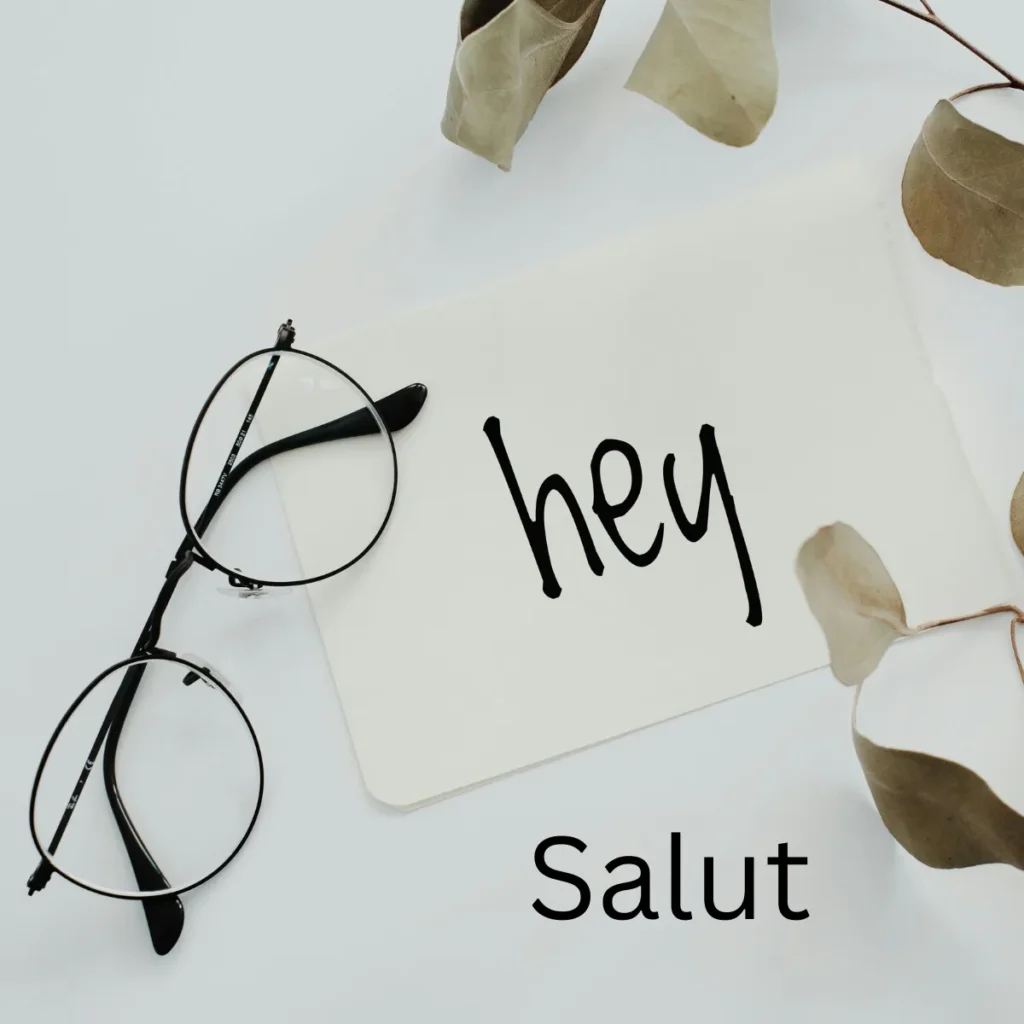
Origin:
“Salut” comes from the Latin salus, meaning “health” or “well-being.” Originally formal, it has become informal over time.
Example:
👤 User A: Salut, Thomas ! Quoi de neuf ?
👤 User B: Salut ! Pas grand-chose, et toi ?
Use: Casual and friendly; for friends, family, or peers.
3. Coucou – Hey there / Peekaboo
Origin:
Originally used in children’s games (like peekaboo). Over time, “coucou” became a playful and affectionate greeting.
Example:
👤 User A: Coucou ! Tu es là ?
👤 User B: Oui, coucou ! Je t’attendais.
Use: Very informal; used with close friends, kids, or in texts.
4. Bonsoir – Good evening
Origin:
Combines bon (good) and soir (evening). Used just like “bonsoir” in English but more common in French.
Example:
👤 User A: Bonsoir, Monsieur Dupont.
👤 User B: Bonsoir ! Enchanté de vous rencontrer.
Use: Formal or polite; used after 6 p.m. or when it’s dark.
5. Allô – Hello (on the phone)
Origin:
Borrowed from the English “Hello” in the 19th century. Strictly used for answering the telephone.
Example:
👤 User A: Allô ? C’est Julie à l’appareil.
👤 User B: Allô Julie ! Comment ça va ?
Use: Only for telephone conversations.
6. Salut tout le monde – Hi everyone

Origin:
“Tout le monde” means “everyone.” This greeting is commonly used when addressing a group informally.
Example:
👤 User A: Salut tout le monde ! Prêts pour la réunion ?
👤 User B: Salut ! On t’attendait.
Use: Casual; used in group settings with friends or peers.
7. Rebonjour – Hello again
Origin:
“Re-” means “again.” Used when you’ve already said bonjour earlier in the day and are seeing the person again.
Example:
👤 User A: Rebonjour, Lucie ! Tu es encore là ?
👤 User B: Oui, j’ai dû revenir.
Use: Friendly and polite; often used at work or in meetings.
8. Yo – Yo / Hey
Origin:
Borrowed from American pop culture and urban slang. Young French people sometimes use it in texts or informally.
Example:
👤 User A: Yo ! On sort ce soir ?
👤 User B: Yo ! Bien sûr, à quelle heure ?
Use: Very informal; youth slang or casual texting.
9. Salut les amis – Hi friends
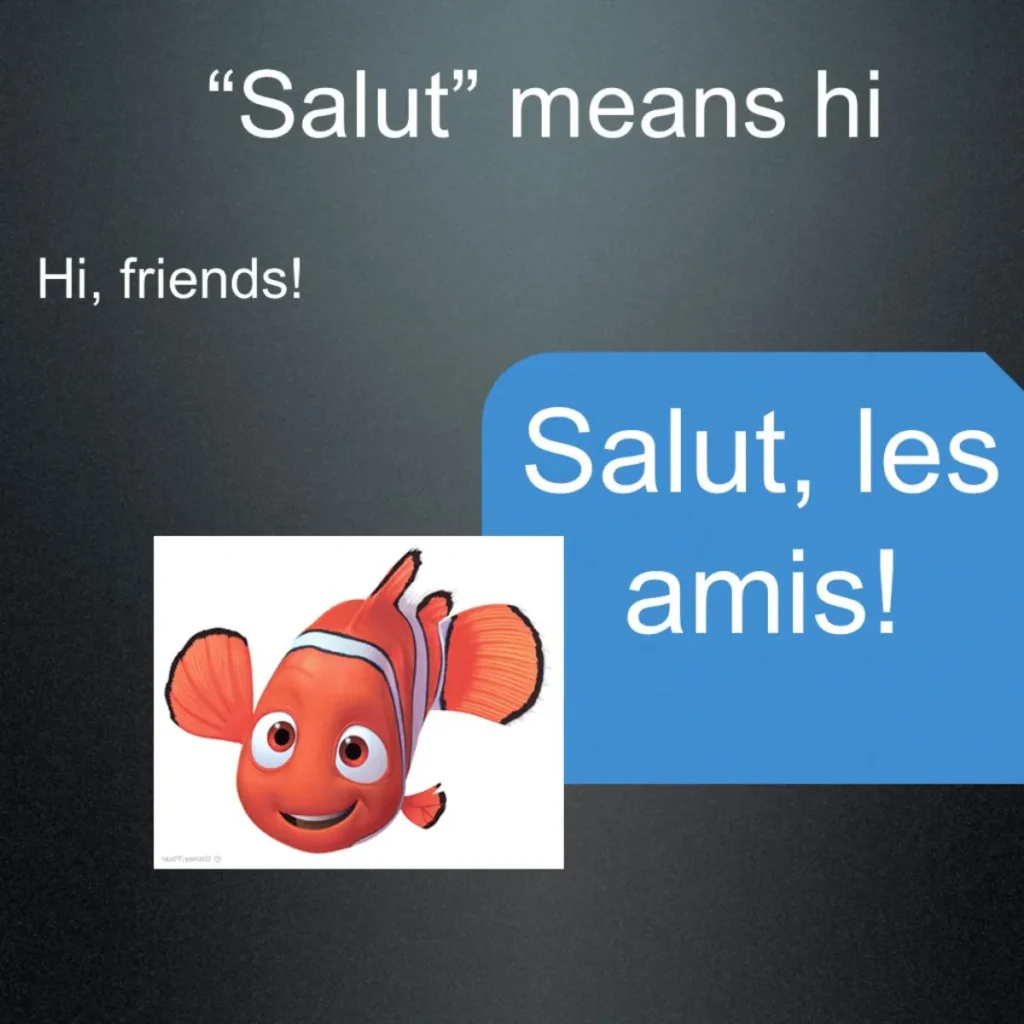
Origin:
Literally “Hi friends,” used to greet a familiar group.
Example:
👤 User A: Salut les amis ! Prêts pour le week-end ?
👤 User B: Salut ! Trop hâte !
Use: Warm and informal; great for group chats or meetups.
10. Ça va ? – How’s it going? / Hi
Origin:
Literally means “Is it going?” but used as a casual hello + how-are-you.
Example:
👤 User A: Ça va ?
👤 User B: Ça va bien, et toi ?
Use: Informal; combines greeting and small talk.
11. Enchanté(e) – Nice to meet you / Hello
Origin:
Literally “delighted,” used when meeting someone for the first time.
Example:
👤 User A: Enchantée, je m’appelle Sophie.
👤 User B: Enchanté, moi c’est Paul.
Use: Formal or polite first-time introduction.
12. Bien le bonjour – A very good hello
Origin:
An older and poetic way of saying hello, used jokingly or in a literary context.
Example:
👤 User A: Bien le bonjour, noble chevalier !
👤 User B: Et bien le bonjour à vous, madame.
Use: Playful, literary, or humorous.
13. Hey – Hey (borrowed from English)
Origin:
Simply borrowed from English, especially by young French speakers or in multicultural areas.
Example:
👤 User A: Hey, tu vas bien ?
👤 User B: Hey ! Super et toi ?
Use: Very informal, especially in messages or with teens.
14. Bonjour à tous – Hello everyone
Origin:
Common in presentations, meetings, or emails. “À tous” means “to all.”
Example:
👤 User A: Bonjour à tous ! Merci d’être venus.
👤 User B: Bonjour ! Content d’être là.
Use: Polite and semi-formal, used for addressing groups.
15. Quoi de neuf ? – What’s new?
Origin:
An idiomatic way to say hello and ask what’s going on. Similar to “What’s up?”
Example:
👤 User A: Quoi de neuf ?
👤 User B: Pas grand-chose ! Et toi ?
Use: Casual and conversational.
FAQs
1. What is the most common way to say hello in French?
The most common way is “Bonjour,” which means “good day.” It’s polite and can be used in almost any situation.
2. Can I use “Salut” instead of “Bonjour”?
Yes, “Salut” is a friendly and casual way to say hello, usually used with friends or people your age.
3. How do you say hello at night in French?
At night, you can say “Bonsoir,” which means “good evening.”
4. Do French people greet with a handshake or kiss?
It depends on the situation. A handshake is common in formal settings, while “la bise” (a cheek kiss) is used among friends and family.
5. Is it rude to not say hello in France?
Yes, greetings are very important in French culture. Always say “Bonjour” or “Salut” before starting a conversation.
6. What do you say when leaving?
You can say “Au revoir,” which means “goodbye.”
7. How do you say hello on the phone in French?
When answering the phone, people usually say “Allô?” instead of “Bonjour.”
8. What’s a cute or flirty way to say hello in French?
You can say “Coucou!” It’s playful and friendly, often used between close friends or loved ones.
9. How do you greet a teacher or elder politely?
Use “Bonjour, Monsieur” or “Bonjour, Madame” to show respect.
10. How can I practice French greetings daily?
Try greeting your friends or family with “Bonjour” and “Salut” every morning—it’s a fun and easy way to learn naturally.
Conclusion:
Now that you know how to say hello in French, you’re ready to greet people with confidence and cultural awareness.Learning how to say hello in French is a simple yet powerful step toward better communication and cultural understanding. Whether you use “Bonjour” for formal settings or “Salut” with friends, each greeting shows respect and friendliness. By practicing these phrases, you’ll make a great first impression and feel more confident speaking French anywhere you go.
